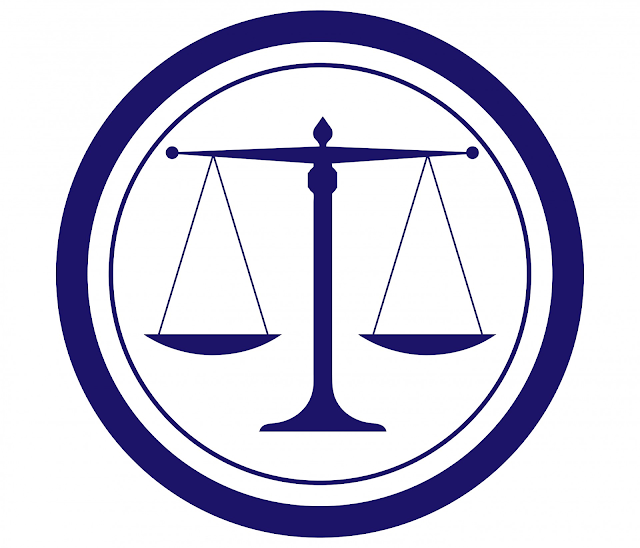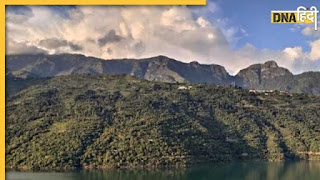Reforming Temple Administration in India Part III – Judicial Successes of Chidambaram and Kamakhya
The Chidambaram Natarajar Case in Tamil Nadu
 |
| Chidambaram Natarajar Temple in Tamil Nadu |
In January 2014, the Supreme Court of India delivered a historic judgment, whereby the appellants, the Podhu Dikshitars, represented by Dr Subramanyam Swamy, were declared the rightful claimants to the administration of the historically significant Chidambaram Natarajar temple. The judgment was significant as the Supreme Court recognized the rights of the Dikshitars as a religious denomination, and acknowledged that their traditional position vis-à-vis the Temple was analogous to muttadhipati of a mutt. What was interesting to note was the attempt of the state of Tamil Nadu to intimidate the petitioners by reopening a 1952 case via the Madras High Court despite it having a Supreme Court ruling, thus creating an instance of judicial indiscipline. The petitioners had argued their position under Article 26 of the Constitution of India and had also maintained that as per the in view of the provisions of Section 45 read with Section 107 of the Tamil Nadu Hindu Religious and Charitable Endowments Act 1959, even if the State has a power to regulate the activities of the Temple, that does not qualify them with the right and authority to divest the Dikshitars from their right to manage and administer the Temple and its properties. The Supreme Court particularly stated that
“Even if the Temple was neither established, nor owned by the said respondent, nor such a claim has ever been made by the Dikshitars, once the High Court in earlier judgment has recognized that they constituted `religious denomination’ or section thereof and had right to administer the Temple since they had been administering it for several centuries, the question of re-examination of any issue in this regard could not arise.”
The Supreme Court ruled that any executive officer appointed by the government for the temple in question can only assist the original trustees of the temple, and that the 1959 Act does not give the executive the authority to replace the trustees as the administrator of the temple. Furthermore, the Supreme Court observed that management of a temple if taken over to remedy an evil cannot perpetuate into eternity – it has to be a fixed tenure, as the purpose of taking over the management and administration is not the removal and replacement of the existing administration but to rectify and stump out the consequences of maladministration. Once the problem has been addressed, the temple administration has to be handed back to the concerned persons with immediate effect. In the words of the Supreme Court:
“Continuation thereafter would tantamount to usurpation of their proprietary rights or violation of the fundamental rights guaranteed by the Constitution in favour of the persons deprived.…. Thus, such expropriatory order requires to be considered strictly as it infringes fundamental rights of the citizens and would amount to divesting them of their legitimate rights to manage and administer the temple for an indefinite period. We are of the view that the impugned order is liable to be set aside for failure to prescribe the duration for which it will be in force.”
The Kamakhya Bordeori Samaj Case in Assam
 |
| Kamakhya Devi Shaktipeetha in Assam |
1. The office of the Doloi is not a hereditary office, but elective and the right of election is in the hands of the Bordeoris;
2. As the Government will no longer take any steps, as of old, to guard the Temple funds from misappropriation by the Dalois, the power to guard them must be held to have developed upon the Elective Body; and
3. The power of guarding is clearly a power some one must exercise, as it would be in the highest degree wrong to have left the uncontrolled management to the Dolois.
Moreover, the Court clearly accepted the contention of the Bordeuri Samaj that the distinct identity of the Bordeoris, and that the Bordeoris, as a class, had the right to watch over the administration of the temple lands, and protect such funds from waste, and that the Dolois are, so to speak, their (the Bordeoris) agents in that matter. Also, the Court stated that the powers of the Bordeories and Dolois not been taken away or adversely affected by the Act as it stood earlier or even after Section 25A of the Assam State Acquisition of Lands Belonging to Religious or Charitable Institutions of Public Nature Act, 1959 was inserted, given that the objective and reasoning for setting up a the statutory Committee under Section 25A as noted by the Division Bench in paragraph 111 of the judgment under appeal and extracted earlier in this judgment categorically clarify that it was (i) to have control over the annuity and (ii) to verify and audit the accounts to the satisfaction of the concerned authority. The statutory Committee under Section 25A is therefore concerned only with the annuity payable or paid under the Act to the Head of the Institution and not with its ownership or management.
One important observation that the Supreme Court made was with respect to the implications of Articles 25 and 26 of the Indian Constitution. The Court reiterated that Article 25(2)(a) and Article 26(b) guarantees the right to every religious denomination to manage its own affairs in matters of religion, and any law contemplated under Article 25(2)(b) has to be read in harmony with 26(b) .i.e. it cannot be in conflict with the guarantees given under the latter. It further reiterated that
“…social reforms or the need for regulations contemplated by Article 25(2) cannot obliterate essential religious practices or their performances and what would constitute the essential part of a religion can be ascertained with reference to the doctrine of that religion itself.”
Commonalities of the Two Verdicts and the Faulty Logic of India’s Professional Secularists
Between the two cases, the Supreme Court’s interpretations have been strictly in line with the guarantees given under the Constitution. Article 25 and Article 26 cannot be read in conflict with each other, and Hindus, particularly sects that can establish themselves as a religious denomination, have the rights to manage the affairs of their religious places WITH ASSISTANCE of the relevant administrative authorities of the state, even if that institution is covered by a state specific religious endowments act. This is important, as the ruling opens the door for the community to take control of their temples much like how the Sikh community manages its gurdwaras. Kindly note however that the temples are NOT still out of the affairs of the government, as the court still identifies the need of the government to support the administration, and this can have dangerous results, as was seen in the dirty attempts of the Tarun Gogoi led Assam government in seizing the administration of the temple by influencing the Doloi elections in 2016. Hence the legal system still needs to be approached for creating the necessary firewalls.
Another important aspect that comes out of the judgments is the aspect of social justice on which several liberal apologists and professional secularists of India have cried foul. The argument that is pushed forward is that these institutions are hotbeds of corruption and casteism, and that only the state should have control of them. This is not only a blatantly biased argument, it also fails to conceptualize several important factors. No temple in India could ever not work without lower caste people inside in the first place, so to claim exclusion of several temple dependent communities of the past who are now going into oblivion is only a partial picture with deliberate strokes. Even today, only a craftsman of the backward Maharana community of Odisha can craft the image of Lord Jagannatha from the wood of a Daru Brahma tree. Yes, there was discrimination against Dalits, but even the Supreme Court has pointed out that once a necessary evil has been remedied the government HAS to relinquish the control of the temple management. With the major temples today open to people of all castes and there being acceptance for all communities in these precincts, there remains no reason why the government can be allowed to retain control of the temples. Another falsehood that temples do not spend their earnings on the welfare of the community at large, since the earnings of the temple are being entirely pocketed by the government without giving proper accounts across all states. Even in the Chidambaram case, the Supreme Court expressed its displeasure at the inability of the state government to present book of accounts of the temple. Massive cases of corruption and theft over time have emerged from all major temples of South India – this despite the so called long arm of the government! Why have the professional apologists not said anything about this mismanagement? To make matters worse, temples of Hindus unlike other communities also pay income tax and several other taxes such as the 5% levy as per the Muzrai regulations of Karnataka, and are also involved across several tax tribunals because of such appalling practices of the state government. In no other country would one imagine a so called secular state having such a selective approach which borders on a quasi-sharia state administration. Therefore, the professional secularists have no authority to argue without facts supporting their bizarre claims of state owning the religious institutions of only one community. Another thing that seems to get the tongue of these professionals is the blatant discrimination perpetuated by the state against the poor priesthood of the temple through abysmal salaries as well as special VIP lanes being created. The roots of the Dravidian movement in Tamil Nadu were rooted in supposed economic discrimination; today however, the shoe is on the other foot, as so called rationalists do not even flinch as temples fund SUV fleets and security cordons of greedy officers and professional Dravidians. When such cases come to light, it is the Hindu community that is to blame all over again, while the leash of the government on the temples is quietly buried under the sand. Therefore, these liberals and secularists would do well to just keep quiet, given how facts are now so inconvenient to them.


Comments